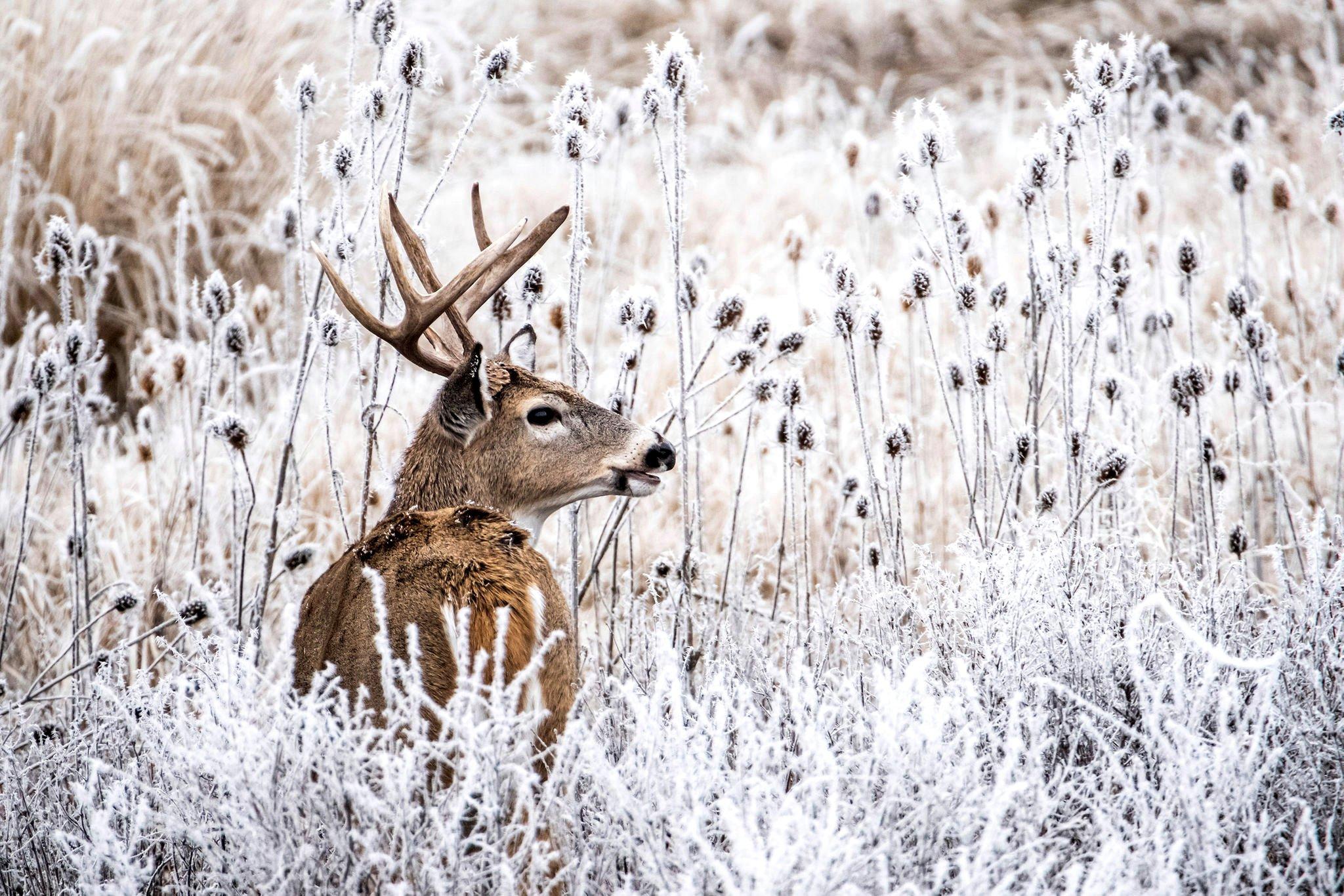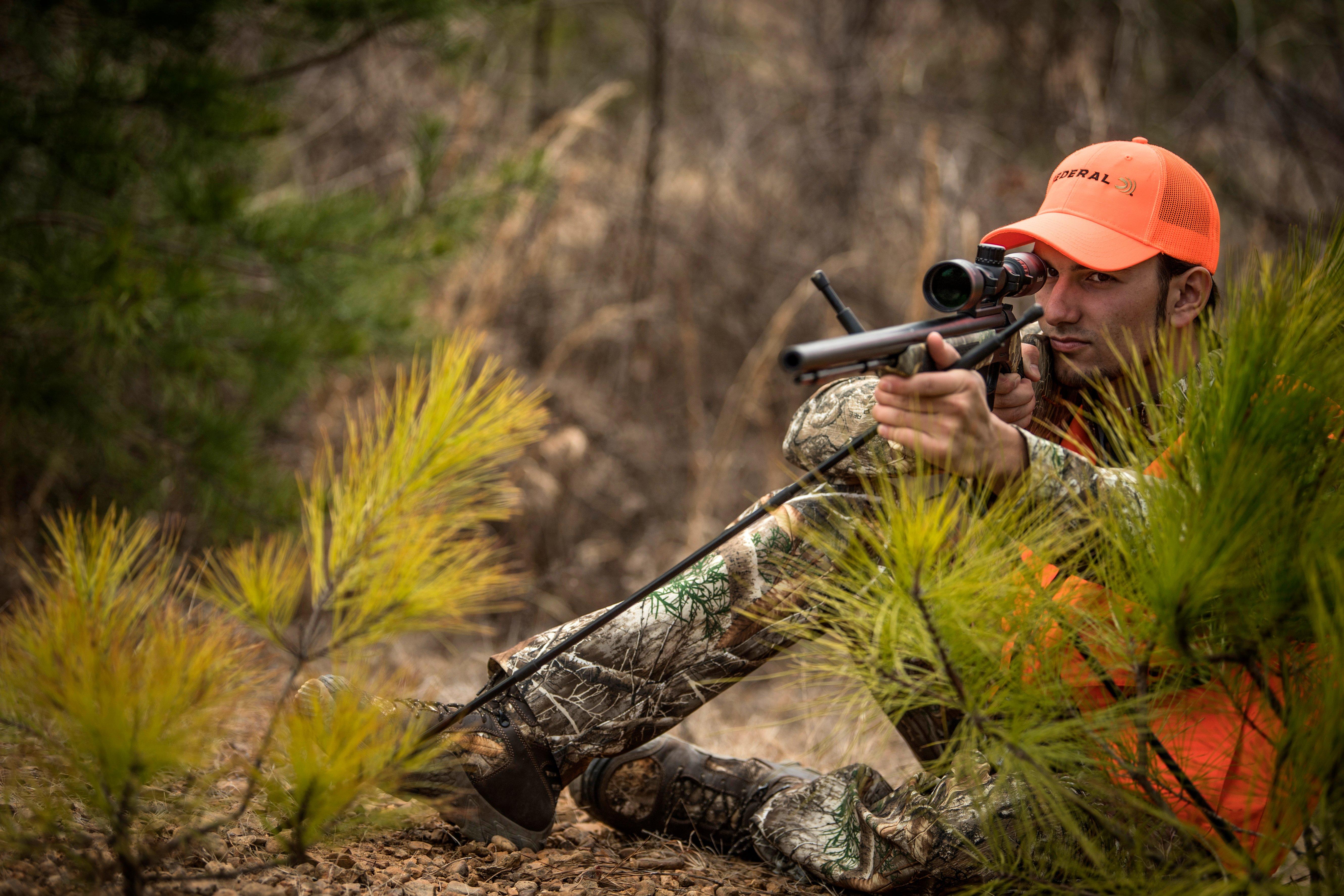Winter deer hunting isn’t all about brassicas and box blinds. Get out and hit the woods with these go-to still-hunting spots

If you’re weary with sitting and waiting, climb down and get sneaky. Image by John Hafner
So, you’re tired of sitting in your treestand? I know I am. But there’s good news. One of the best things about late-rifle and muzzleloader season is that you can get out and walk around a bit. Still-hunting may seem like an old-school tactic, but it really works, especially during the late season. And it’s way more fun than scrolling through your phone in a ground blind.
I hunt on about 80 acres of private land for the majority of deer season, but I also keep a milk run of still-hunting hotspots to visit late in the year. Depending on what the deer are doing, and how tired I am of freezing my butt off, I’ll pack a lunch and hit the trail looking for a buck. Here are few of the kinds of places I like to still hunt, and the best tactics I’ve used take advantage of them.
1) OXBOWS
Bucks love to bed along creek bottoms in thick, nasty cover. After the rut, lowland bucks also like to spend their time in oxbows because they’re surrounded by water on three sides and only need to watch for predators in one direction. During the late season, when bucks are tired of chasing does and fighting, you might find them bedded where creeks make sharp turns. This is especially true for oxbows with brushy or wooded banks near ag fields or other food sources.
Still hunting from land into an oxbow will put you at a disadvantage. Bucks expect threats to come from that direction and they’ll be watching. If the water is low enough, and not completely frozen, put on a pair of waders and walk through the creek. The sound of the water will cover your movement, and if the bank is high enough, you can use it for cover. Some hunters also like to approach oxbows by canoe. It can be a good way to sneak up on a buck, and it makes dragging him out a whole lot easier.
Don’t Miss: THE BEST LATE-SEASON FOOD SOURCES FOR WHITETAILS
2) GOLDENROD FIELDS
Where I hunt in upstate New York, there are a lot of fallow fields filled with goldenrod and hawthorn. During the winter, I’ve seen deer bed in brushy edge habitat and hedgerows, and they come out to overgrown fields to feed late in the afternoon.
Your tactic here is part still hunting, part spot-and-stalk. Because you — and the deer — have long lines of sight, you’ll need to see them from a distance before they see you. Use hedgerows and folds in the land for cover to stalk, and try to time any risky movements for when the deer have their heads down obstructed by the goldenrod. With the right wind, you can sneak into range and get a shot.
3) BENCHES WITH HARD MAST
Most of the mountains in the Northeast are made up of benches. I’ve also seen them on reclaimed strip mines in Appalachia. A bench is a flat spot on a mountain, and sometimes benches will descend like a giant staircase. You can identify them on topo maps if you know what you’re looking for, but I’ve found that they’re easier to see in person. Benches with hard mast like acorns, beech, or hickory nuts are especially good for catching bucks in the post-rut when they’re back on the feed.
The best way to still-hunt a bench is to find a ridge that overlooks it. Look for big trees and boulders where you can stop and glass below. When you’re hunting a bench in open hardwoods, you’ll want to move a few steps and stop behind cover to break up your outline. It’s important to hunt either a cross wind blowing up the mountain from below, or a headwind right in your face.
Morning thermals tend to bring wind upward, so focus your efforts on the first half of the day. Keep an eye below and straight ahead for deer standing still. Look for antler tips, tail flicks, or anything that resembles a deer’s back. You probably won’t see a buck moving unless there’s one chasing a doe that came into heat late.

Move slowly and use your optics to pick apart what’s ahead. Image by Realtree Media
4) FINGERS THAT OVERLOOK BUCK BEDS
A friend of mine loves to hunt late-season bucks by trying to shoot them out of their beds. In the mountains, bucks often bed on promontories, and sometimes they’ll bed at the end of a long finger or ridge. During the coldest part of deer season, you’ll find midday buck beds in green growth, like mountain laurel, on southern exposures. If you can identify a few fingers and confirm that bucks like to bed on the ends of them, add them to your list of still-hunting spots.
Hunting a buck bedding at the end of a finger is simple, but it’s easy to screw up. Wait for days when the wind is blowing or the leaves are wet to cover your footsteps and get to where you can walk from the highest point on the finger toward the end of it where the buck might be bedded. You’ll need to put on a death-creep here, and you may take an hour to move only 50 yards. If the wind is right, and there’s a buck bedded ahead of you, you have a good chance of sneaking up on him.
5) CONIFER FORESTS
On rainy winter days, one of my favorite places to hunt deer are pine forests. The ground is always quiet, and the sound of the rain covers up any noise I might make. Bad weather also pushes deer to take cover under conifers, and under the right conditions, you can sneak up on bedded or feeding deer.
Find a few places in the woods where there are conifers that are mature enough to walk under. You may also want to check spots with conifers that butt up against good edge habitat and browse near places like beaver swamps or ag fields. If you have a rifle rigged up with iron sights, this is the time to use it because the rain can screw up your scope. If you don’t, use a scoped rifle on low power and quick-release scope covers. Shots will be quick and close in cover like this, so move slow and be ready to shoot.
Don’t Miss: 6 OF THE BEST NEW DEER LOADS FOR 2024
6) LEEWARD MOUNTAINSIDES
On bad-weather days deer also like to hunker down behind terrain that shields them from the wind. In mountain country, these are on what’s called the leeward side of the mountain. Pay attention to the prevailing winds in your area, or take note of how the wind typically moves over a mountain you regularly hunt and mark down any spots where the wind isn’t blowing hard. When the weather is bad, strike out in search of bedded deer.
With branches moving and wind howling, deer are less likely to see or hear you approaching, but they will still be hard to sneak up on. Take a similar approach to hunting a buck bedded on a finger and move slowly. Look for promontories that give you a height advantage and glass everything. The more you look with your binoculars the more you’ll see, and eventually you might just see a bedded buck.

Travel light, but consider bringing lightweight shooting sticks. Image by Realtree Media
7) PUBLIC WOODS BEHIND DEVELOPED LAND
Deer that live in areas without agriculture can usually be seen hitting vegetable gardens and backyard shrubbery. Peoples’ yards can actually provide the perfect edge habitat for whitetails. Check onX, HuntStand, or Google Maps for patches of big woods that butt up against developed areas and private land. Here, you don’t want to hunt right next to someone’s backyard. Rather, you want to catch deer that are back on a bed-to-feed pattern and intercept them moving on travel corridors to and from the feeding areas. Early morning and just before dark are the best times to hunt.
Before hunting near any developed area, you need to make sure you’re on the right side of the law. Double-check the required distances for firearms near dwellings, and check laws related to hunting within or outside of city limits. And most important, always be sure of your target and what’s beyond it before pulling the trigger.
How to Scout Still Hunting Spots
Before striking out into the woods with a rifle, it helps to have a few of the spots above lined up. I like to scout around March and during the season while hunting — the idea being to build up a list of places that deer frequent year after year.
Start by e-scouting with onX or with a topo map to isolate big terrain features like saddles, gulches, mountain tops, fingers, drainages, and rivers. Once you’ve dropped a few pins, pack a bag with cheap trail cameras and place them on buck sign, runs, or bedding areas. You won’t pull cards and hunt over fresh deer activity during the season, but by checking the cameras every few months, you’ll know if you’ve found areas that deer like to use during the late season year after year.
Once you’ve found a few places that hold deer, mark any terrain features that would give you an advantage at sneaking up on one. You may find a bench that overlooks fresh cut where bucks like to bed, or you might see a creek bottom you can follow to get to a patch of hard mast. Whatever it is, think of your approach and plan still-hunting routes based on the terrain. When the conditions are right, execute your plan.
Don’t Miss: 10 STEPS FOR LEGALLY TRANSPORTING AN OUT-OF-STATE DEER HOME












